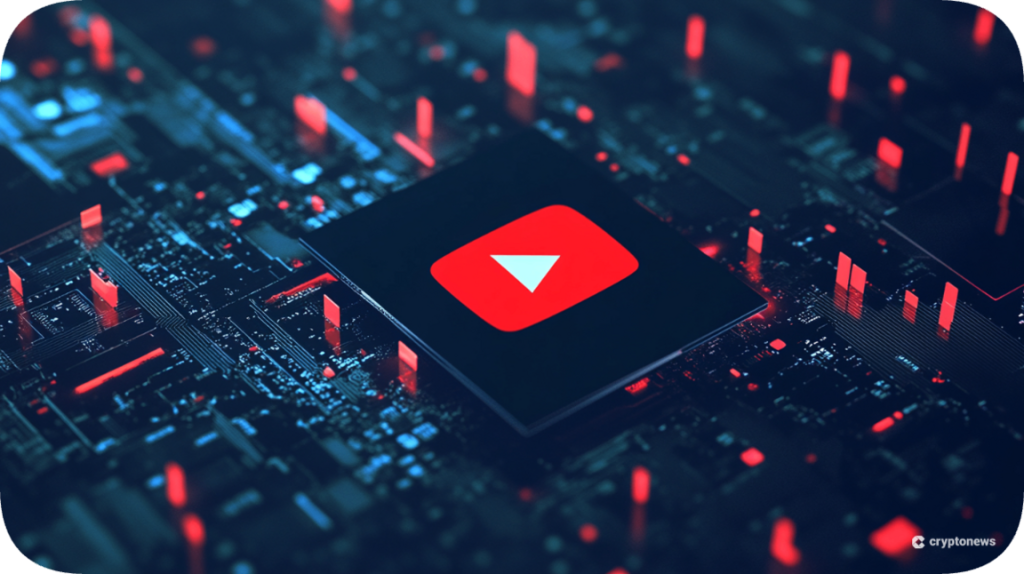In a shocking move, YouTube eliminated the channel of Bitcoin broadcaster Roxom TV on May 14, resulting in a sudden loss of 2,000 subscribers.
Launched in November 2024 by crypto entrepreneurs Borja and Helena Martel Seward, Roxom TV is a budding media platform dedicated to Bitcoin (BTC) news, culture, and education, establishing its YouTube presence soon after its inception.
Still no ETA. Still no human review of our account. It’s been two days.@YouTube removed our channel with zero strikes and no explanation.
We stream Bitcoin educational content 24/7. That’s the “dangerous content.”
Catch us on @rumblevideo. @chrispavlovski https://t.co/AFxrhOUJ6c
— Roxom TV (@RoxomTV) May 16, 2025
Roxom TV Addresses YouTube Removal
In an interview with Finance Newso, Alex McShane, the director of Bitcoin strategy at Roxom TV, expressed frustration, stating that YouTube did not provide a valid reason for the removal of their channel.
“Our transcripts from recent shows do not support the reasons given in YouTube’s emails,” McShane shared.
The email notification from YouTube cited a violation of its policy regarding “harmful and dangerous content.”
After submitting an appeal, Roxom TV was informed that the channel would remain banned due to ongoing policy violations.
McShane speculated that the ban might have been enacted by an automated system that misinterpreted their content as endorsing cryptocurrency projects.
“I suspect this was an automatic ban triggered by bot moderation, possibly mistaking our critiques of crypto scams and hacks for promotions. Though it’s hard to pinpoint,” he elaborated.
He noted that Roxom TV frequently streams live content, which could increase the sensitivity of YouTube’s algorithm, especially regarding their political discussions incorporating Bitcoin.
Despite the ongoing ban, McShane remains hopeful about reinstatement, stressing the necessity of a human review for their appeal, as only automated systems have assessed their case thus far.
The Broader Context of YouTube’s Content Policies
Roxom TV’s situation is not isolated; it follows a pattern on YouTube, which previously saw a “crypto-purge” in December 2019 that affected at least 35 cryptocurrency-focused channels, including well-known entities like Bad Crypto Podcast and Altcoin Daily. Some channels from major media outlets, such as Bankless and Cointelegraph, were similarly removed but later restored.
The Bankless @YouTube account ‘has been terminated’
No warning.
No notification.
No justification
150,000 subs
10,000+ hours of content
Hey @YouTube, our community would like a word!
RETWEET to let YouTube hear you: It’s not okay to ban crypto content pic.twitter.com/MJQ4MGwtYD
— Bankless (@BanklessHQ) May 8, 2022
An article by Finance Newso TV18 indicated that channel removals stemmed from community guideline violations, yet these actions were likely driven by machine learning algorithms making automated judgments.
Recently, YouTube has intensified its restrictions on gambling-related content, warning creators against promoting gambling sites. On March 4, the platform clarified that it may remove videos claiming “guaranteed returns.”
However, McShane observed that the notification sent to Roxom TV did not specify any violations related to gambling standards.
Challenges with YouTube’s Algorithm
YouTube’s algorithm may struggle to differentiate between cryptocurrency and gambling content, leading to potential misclassifications triggered by specific terms. Nikki Martinez, head of short-form video content at Hype, noted that creators frequently encounter flags or shadowbans for using certain keywords.
Martinez, who currently collaborates with a network of creators at Hype to develop crypto content, recounted her own experiences of being shadowbanned for discussing the reasons behind her account’s removal.
“TikTok’s moderation system can flag phrases like ‘guaranteed income’ or ‘easy money’ as scams or misleading,” she explained. “Moderation tends to overcorrect, limiting content based on specific keywords or contexts.”
Additionally, she highlighted that most platforms, including YouTube, prefer not to have creators directing traffic away from the site, particularly concerning financial products.
Fortunately, platforms like TikTok and YouTube do allow users to appeal flagging decisions.
“I’ve seen creators successfully appeal content removals and later gain significant viewership,” Martinez noted, while cautioning that these bans have become more prevalent as regulatory scrutiny on financial content heightens, especially in the unregulated crypto space.
Guidance for Crypto Content Creators
Amid these challenges, McShane emphasized the importance for Web3 creators to explore decentralized platforms, such as Nostr or Calaxy, where censorship is less likely. Yet, the vast audience of platforms like YouTube and TikTok remains enticing.
Martinez advises crypto creators to be cautious with their language. “Success on platforms like TikTok often hinges on how a message is communicated. Phrasing that steers clear of financial jargon tends to avoid violations,” she stated.
She underscored that some social media platforms are more accommodating towards crypto content than others, with X (formerly Twitter) being notably more supportive.
“If you’re discussing unregulated sectors on Instagram, TikTok, or YouTube, it’s crucial to also develop an audience elsewhere, such as through email lists or community platforms like Telegram,” she added. “Diversifying your platforms reduces dependence on any single one.”
Martinez believes that content creators who successfully frame crypto narratives in an accessible and culturally relevant manner will thrive in the long run.
Wendy O, a crypto content creator with approximately 2,050 YouTube subscribers, shared her insights, stating that she has not faced any bans on the platform. Her advice to fellow creators is to familiarize themselves with platform policies and to be cautious with their wording.
The post YouTube Axes Roxom TV, Sparking Fresh Fears of Bitcoin Content Crackdown appeared first on Finance Newso.


























